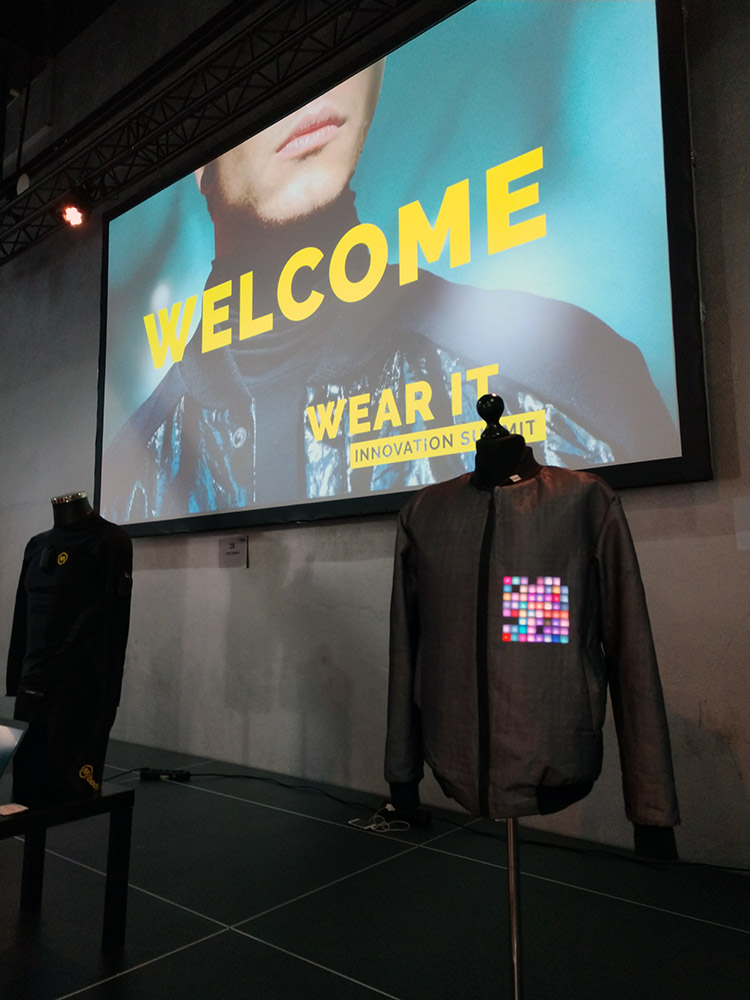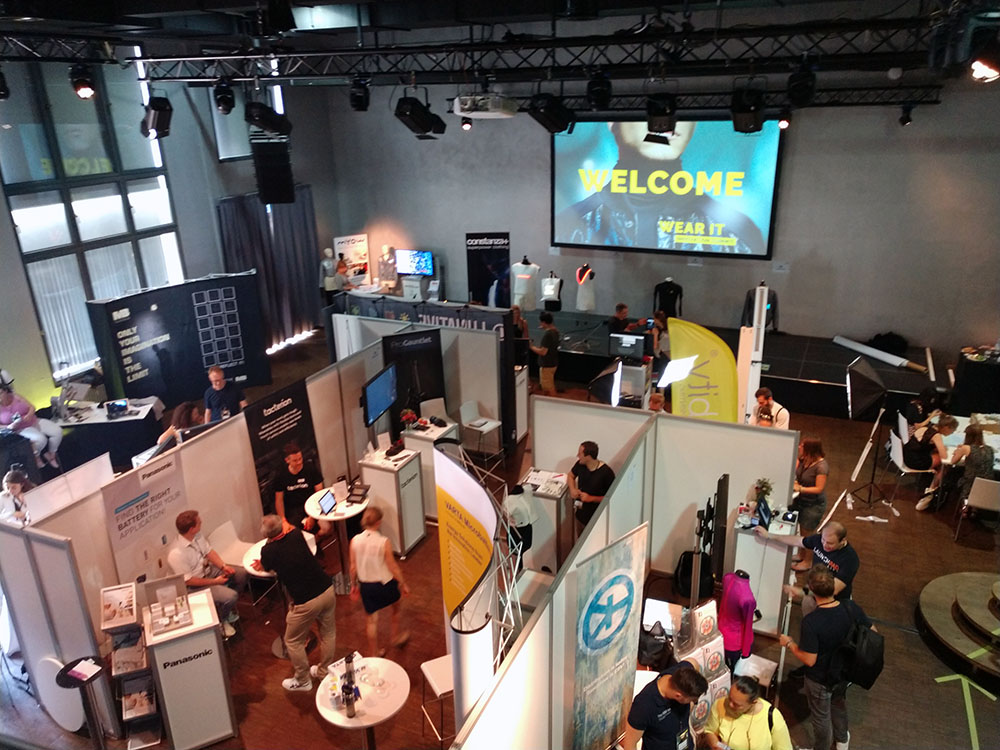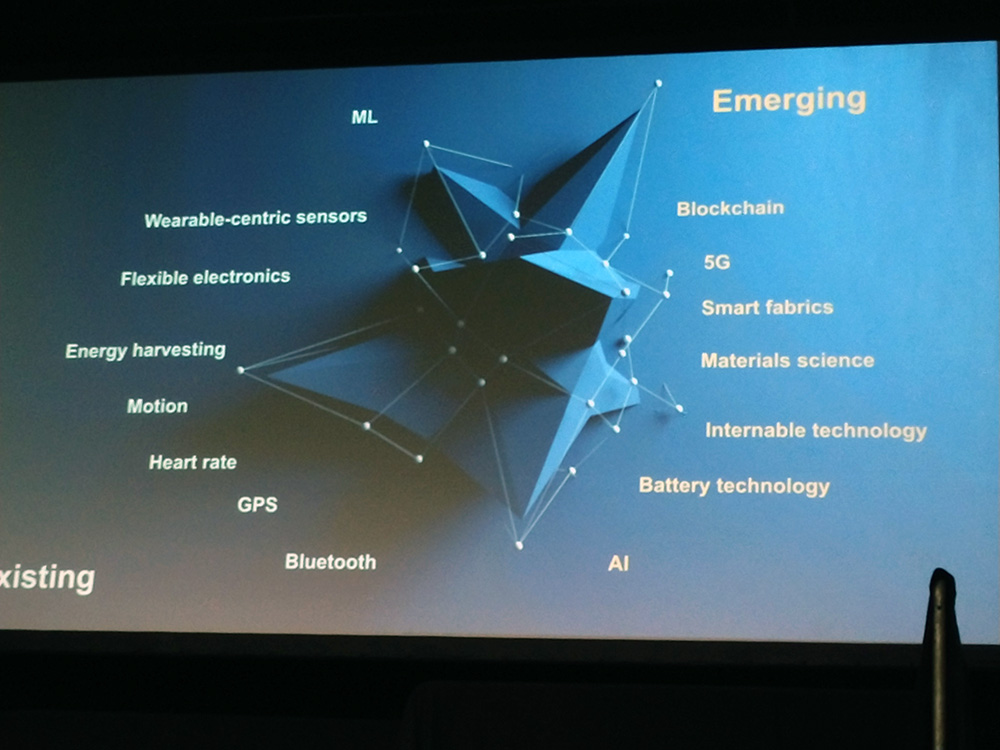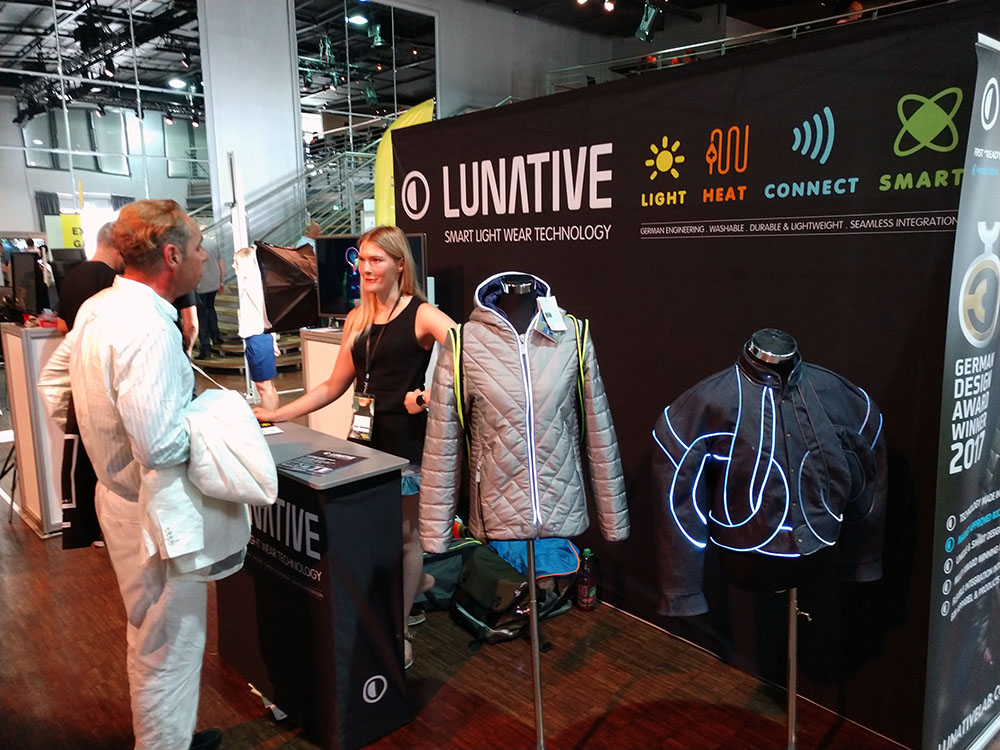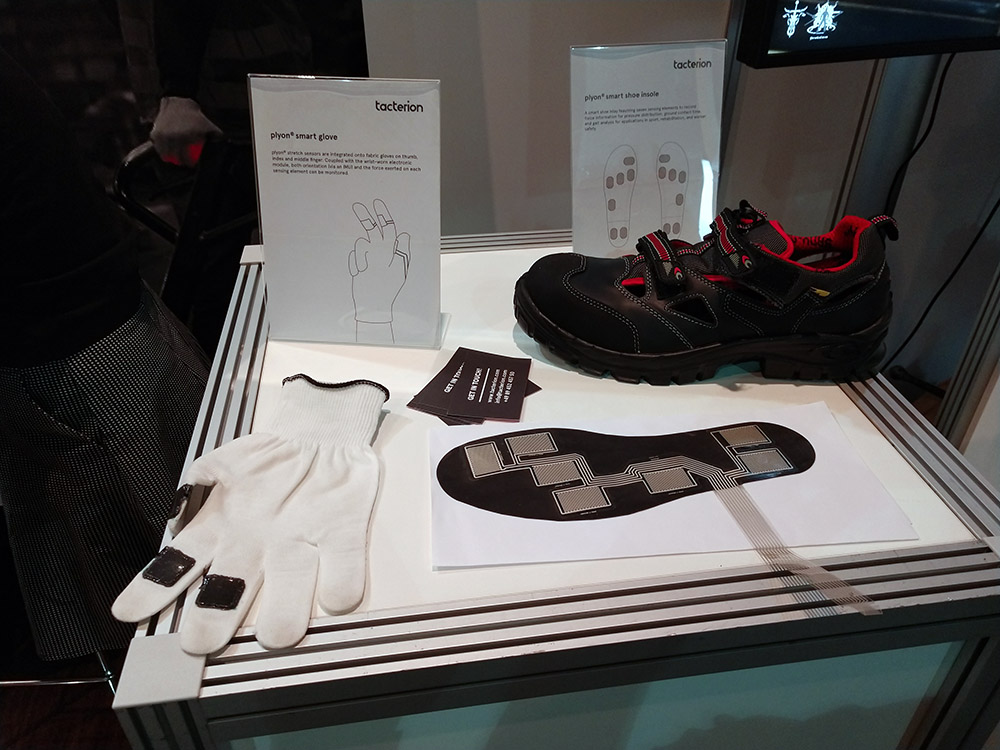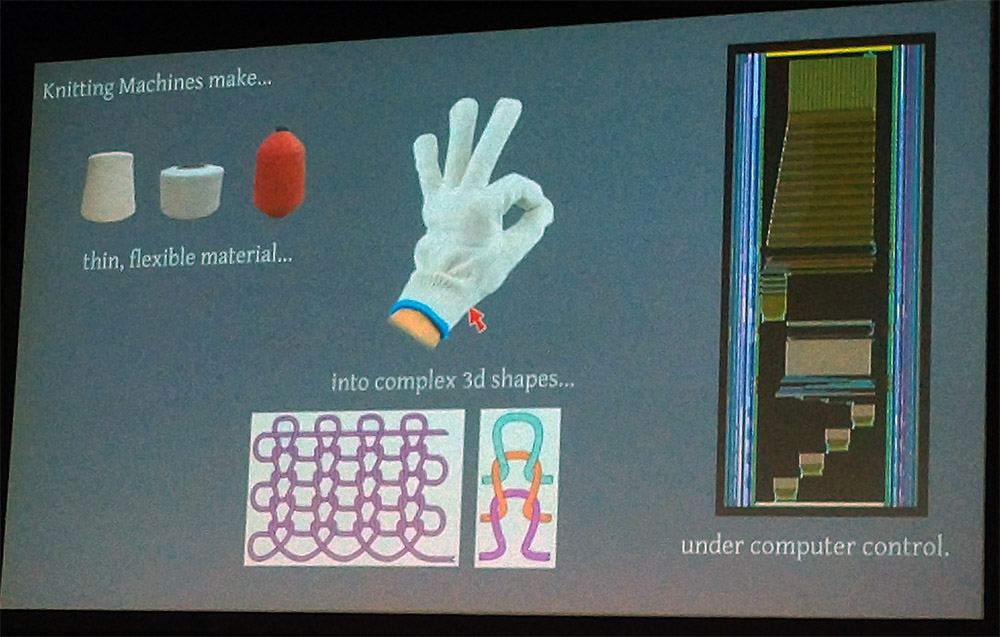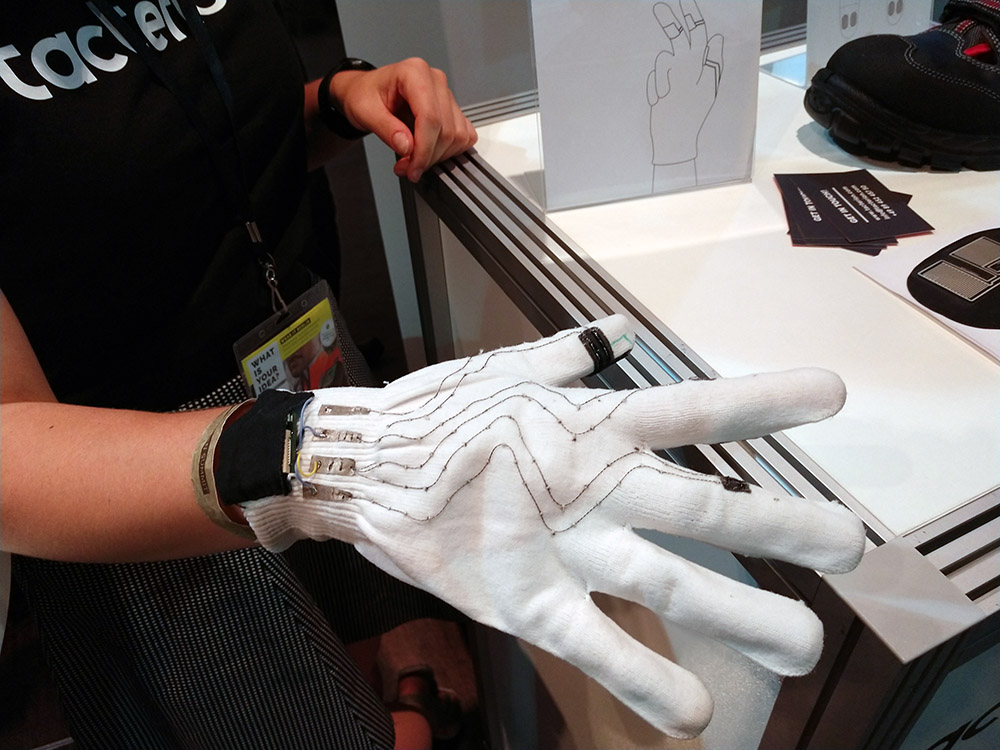Wear-It Innovation Summit is a two-day convention on wearable trends and tech-innovations, packed with lectures, workshops and an expo area with demo booths. I went there to find out if any current or future wearable trends may apply to Virtual Reality developments.
Current VR treats the headset mostly as an additional screen device instead of an additional body part. The community of Wearables does not really make a difference here, except for not treating VR headsets as something close to a wearable at all. AR glasses seem to fit better into this perspective – a rather longterm perspective, following the lecturers’ estimations. They claimed another 10-20 years of development in AR to bring this technology closer to wearable mass-market adoption. The critical issues for rather slow adoption rates in the near future sound too familiar to VR enthusiasts: product clumsiness, product awareness, visual restrictions, pricing/manufacturing costs.
In terms of VR, there was no headset or hardware to be seen at the show floor. But I could find interesting inspirations for other critical areas of current VR equipment: sensor technology for better haptics in current motion controllers, for example, or complete replacements of control buttons with wearable input devices.
Most of these wearable innovations were created for rather traditional areas like automotive or fashion industries. Most often they point to special demands and special use cases in highly specialized manufactoring areas. But these innovative wearable devices may also be useful for helping VR to get back on track, where it originally came from: to physical interaction instead of poor game mechanics, to body perception instead of robot behaviorism, to a media platform of it’s own instead of becoming another button pressing multimedia experience.
Wear-It Innovation Summit may not have been an eye-opener for better VR headset design. But the event can give a hand to better VR handling as a body experience – starting with innovative fabrics and knitting procedures, moving on with sensor integration and physical tracking devices, and ending up in line with updated adaptations of the essential DataGlove classic.

